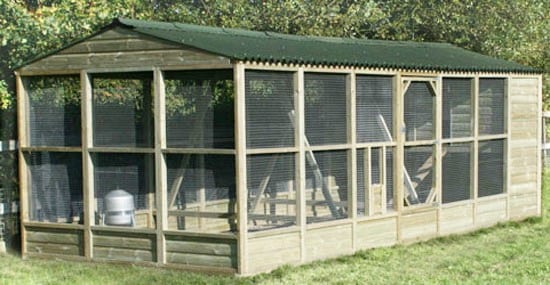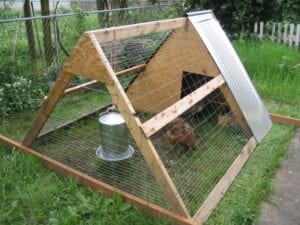1. Permanent Coops
Permanent Coops With Fixed Runs:
If you have limited space, this is your best option. Coops with runs are much better than battery poultry production and allow for much happier and healthier chickens.
There are downsides, though. Unless you have a very large run (outdoor confinement space) or few chickens, the ground in these runs can become burnt by excess nitrogen in the “hot” manure from the chickens. This will denude your run of all grass, leaving dusty or muddy patches of earth.
The stationary nature can also be an incubator for disease.
These issues can be mitigated and access to fresh forage can be provided by dumping all the fresh organic wastes from your yard, glass clippings, leaf piles, kitchen scraps, straw, etc., into the run.
Chicken love to scratch and forage and will quickly turn this into valuable compost, which you dig out and place in your garden, and which will then restock the run with fresh organic matter. Chickens will eat all sorts of tasty treats like insects, fungi, and other organic matter and get great benefit from it.

Permanent Coops With Free-Range Access:

You’ll need more space in order to allow chickens free-range access to your enclosed lawn or garden. This method is better for the chickens and requires less effort on the whole.
With this kind of coop, you let the chickens out to free-range around your lawn or garden daily, and they forage happily where they will. You have to ensure your yard fence is secure to prevent them escaping and to stop predators like dogs, foxes, and racoons from harassing or killing them. If you’ve got a young vegetable garden, you might have to fence them out of it to prevent them from eating the tender shoots.
Chickens naturally come home to roost at dusk, so you should have little trouble securing them at night (though you may have to clip the tip feathers on one or both wings to stop a particularly adventurous bird from deciding to sleep in a tree now and then).
